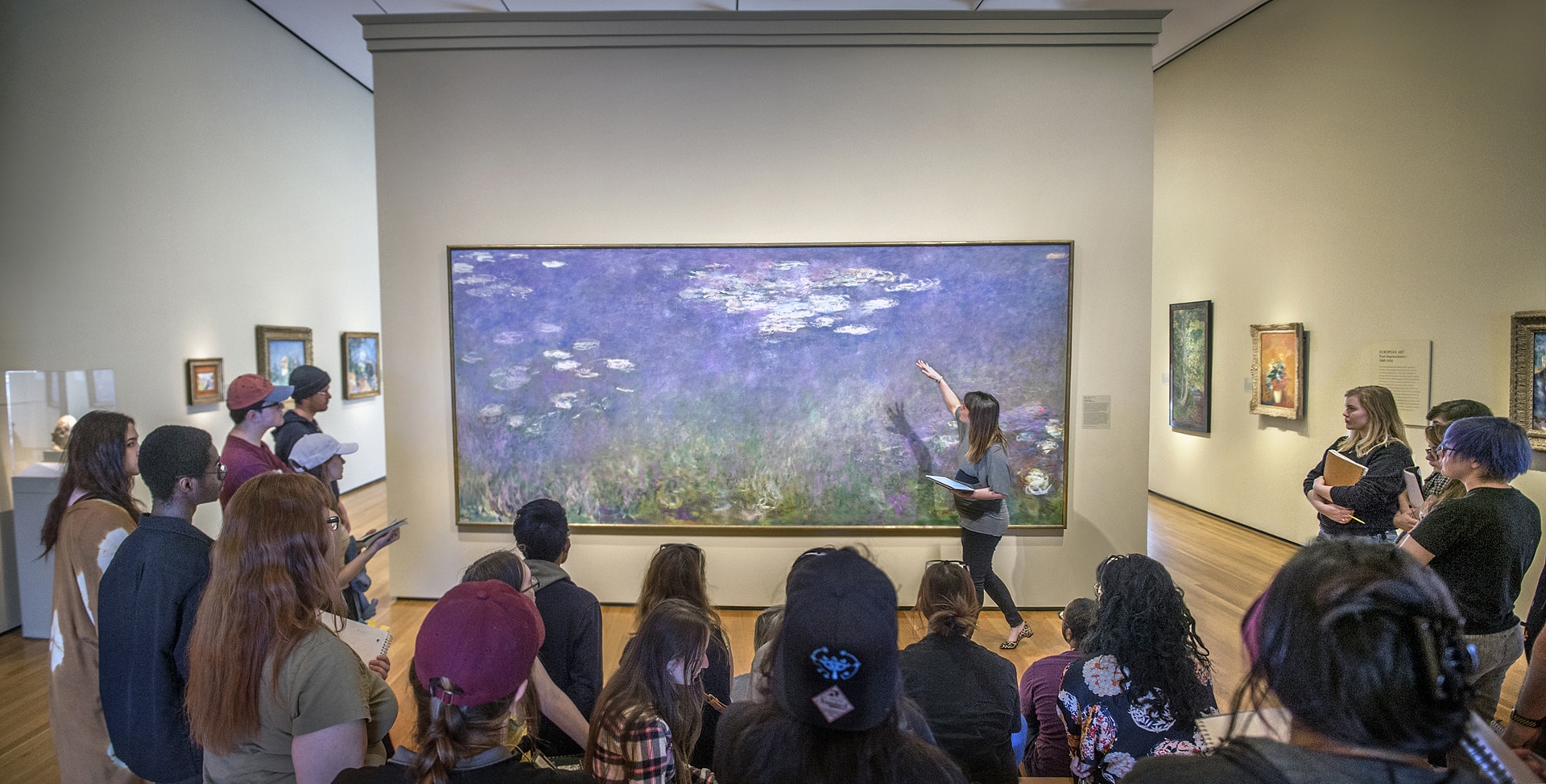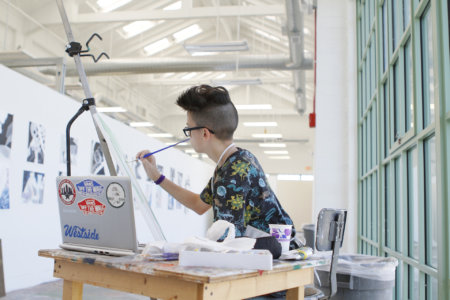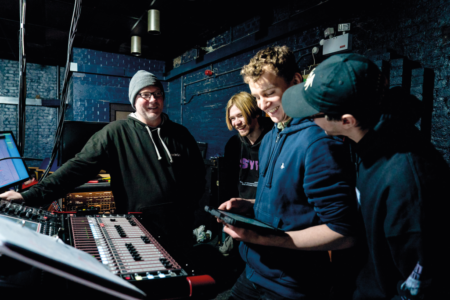At the Cleveland Institute of Art (CIA), students are part of a community that challenges perspectives on purpose. This will help you grow and evolve as an artist while developing contacts in the industry. “CIA has honed my artistic skills thanks to my teachers and mentor, as well as building new knowledge of other art practices and building my network with the Cleveland art scene,” says Drawing graduate Chi Wong.
CIA is located in a city known as “The Land for keeping ‘em talking. The Land for getting inspired. And The Land for living it up”– great for any artist seeking inspiration from its many museums and galleries. More precisely, the College is based in the heart of its cultural district, University Circle, recently named one of the 10 ten prettiest communities in the country by Forbes Magazine. As Wong and other graduates have discovered, there’s no better place to study, live and work.
The CIA campus is a true artists’ community. This is where you can work on your creations in a small learning environment with your own individual studio space. Completed in 2015, the George Gund Building is a 248,000-square-foot space that’s ideal for learning about, making, and exhibiting art — including the Reinberger Gallery, the Ann and Norman Roulet Student + Alumni Gallery and the American Greetings Welcome Center. These are part of the institute’s state-of-the-art facilities, all designed so you can think, live, and work as a professional artist or designer.
The diversity of facilities matches the variety of programmes available. While students choose from 13 majors, they can explore different art practices. Wong’s speciality involves creating watercolour drawings and public installation projects, but one of her most memorable classes was glass blowing. This elective allowed her to step outside her comfort zone and try a new medium.
“The biggest lesson from glass-blowing is that I learned I can take on a challenge,” she says. “Glass-blowing is intimidating and scary as I could potentially burn myself, and this medium allowed me to feel like I conquered something. Thus it helped me believe that I can take on any challenge and come out the other side with success.”

CIA’s faculty are professional artists, designers, and scholars in their own right. Source: Cleveland Institute of Art
“Success” is a common theme in CIA. Empowering students like Wong to pursue and attain creative careers that matter personally, and to the world is part of its DNA. And this starts from day one, taking place through coursework and initiatives that hone technical, problem-solving, communication and other professional skills.
Wong had her hand at the Adobe Software Suite and honed her adeptness with research and management. She developed a willingness to learn and open-mindedness. “In my professional career, these skills allow me to hear what my clients are asking for a project,” she says. “If it is something out of my existing skills or knowledge, I’m excited to learn from my clients, especially if they had done it themselves before.”
Summer internships at the Morgan Conservatory, Museum of Contemporary Arts, and with the artist Jordan Wong enhanced Wong’s CIA experience. Under the wing of an experienced artist, she was able to sit in on client meetings and get constructive feedback on her own work. The latter was especially useful as it helped improve her senior year thesis defence. “Although I’ve graduated, Jordan still supports my work. He sends me opportunities that would match my artistic style,” says Wong. “I am very grateful to Jordan for supporting my art career and my work. We keep in touch and try to meet up each month to catch up.”
With a 10:1 student/faculty ratio, you are guided by world-renowned faculty who are all professional artists, designers, and scholars in their own right. No matter which programme you choose at CIA, you get the support you need from talented faculty and hands-on experiences that inform your future career.
Your pick of artistic mediums

No matter which programme you choose, you are assigned your own studio space. Source: Cleveland Institute of Art
Ranked as one of the top choices in the country, the Industrial Design programme boasts graduates who are leaders in the field, solve real-world problems and become successful entrepreneurs. Outside of studying drawing, modelling and computer-aided design, you will pick up integral soft skills such as visual communication, form development, and presentation and strengthen your manufacturing, ergonomics, and marketing knowledge. The curriculum for this programme focuses on research, conceptualisation and refinement. With this degree, you can become a car designer, motorcycle designer, strategist and artist, president of balance product development, product designer or toy designer.
If you dream of becoming an experiential, retail, restaurant, environment, museum or retail designer, opt for the Interior Architecture programme. Here, you will have your own professional design studio, sharing space and resources with Industrial and Graphic Design students. You can access the fabrication studios for hands-on research with tools and materials. The programme emphasises commercial, retail, architectural, functional, and spatial design.
A true highlight of the Interior Architecture programme is the school’s partnerships with local design firms. This allows you to take part in hands-on assignments such as designing restaurants, healthcare centres, auto dealerships, museums, exhibitions and showroom space. All of this gives you real industry experience and perspective.

Collaboration is a key part of learning and living at CIA. Source: Cleveland Institute of Art
The Game Design major gives you insights into the booming industry. Students are mentored by faculty who have extensive experience in gaming and interactive companies. Past graduates are happy to help you build connections and networks in the field too. In this major, you will be part of the school’s digital arts student community, which has core courses in common with those from other majors. This allows you to explore new disciplines, build team skills and learn from your peers.
Prefer working on techniques and materials in jewelry design, metalwork, functional objects, and sculpture. As a Jewellery + Metals major, you’ll pick up vital entrepreneurial skills. At graduation, you will be able to understand your client’s vision, conduct research and ideation, present design options, make prototypes, and produce work that will fulfil the objectives for the perfect end product. In this programme, you will sharpen your techniques and understanding of materials in jewellery design, metalwork, functional objects, and sculpture as you master various concepts and technologies, including 3D modelling,3D printing and CAD (computer-aided design).
Click here to apply to Cleveland Institute of Art now.
Follow Cleveland Institute of Art on Facebook, Twitter, LinkedIn, Instagram, YouTube and TikTok.












